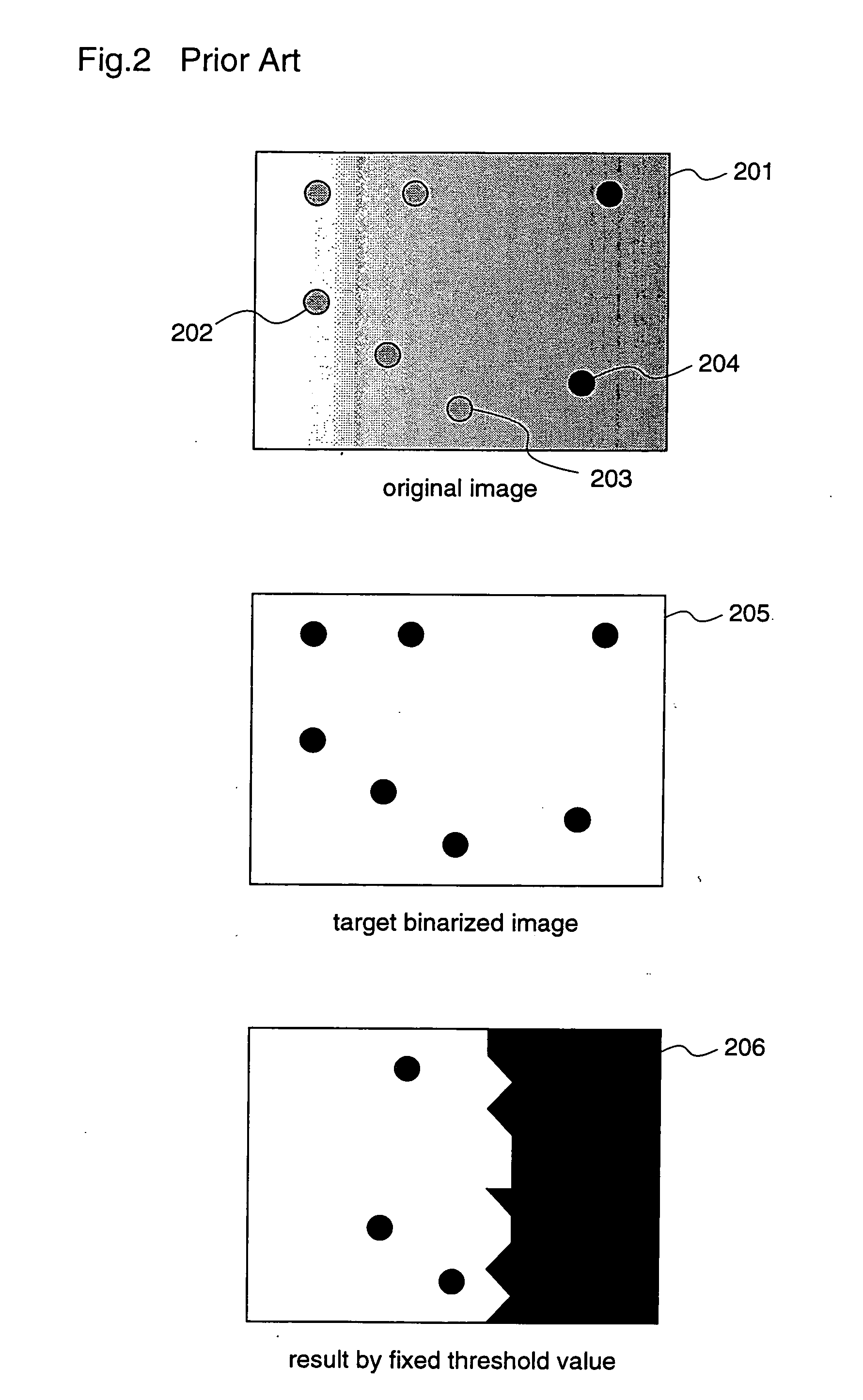Image processing method and image processing apparatus
- Summary
- Abstract
- Description
- Claims
- Application Information
AI Technical Summary
Benefits of technology
Problems solved by technology
Method used
Image
Examples
embodiment 1
[0042]FIG. 3 is a diagram for explaining the principle of an image processing method according to a first embodiment of the present invention, illustrating an original image 300 having three or more levels of gray, that is, a gray-scale original image, and histograms corresponding to local areas of the original image 300. An image obtained by shooting bacteria is used as the original image 300. A histogram 303 is a histogram of luminance values in a local area 301 of the original image 300.
[0043] The histogram 303 shows the luminance values of all pixels included in the local area 301 by their frequencies, and dark pixels, i.e., pixels whose luminance values are “0” are located at the left side of the image while bright pixels, i.e., pixels whose luminance values are “255”, are located at the right side of the image. The number of pixels indicating each luminance value is taken in the vertical axis. Since, in the local area 301, the background has the largest area, the number of pi...
embodiment 2
[0062]FIG. 7 is a block diagram illustrating an image processing apparatus according to a second embodiment of the present invention, for implementing the image processing method according to the first embodiment.
[0063] With reference to FIG. 7, an image taken by a camera 700 is stored in a frame memory 701. The taken image is a gray image comprising 1000×1000 pixels, each pixel having 256 levels of gray. The frame memory 701 outputs, as image data, the whole area of the stored image or a part of the image. In this second embodiment, the frame memory 701 outputs the whole area of the image.
[0064] A whole histogram formation unit 702 forms a luminance histogram of the whole image data outputted from the frame memory 701, as shown in steps S101 and S102 of the first embodiment.
[0065] A reference luminance ratio formation unit 703 obtains, as a reference luminance value G, a luminance value indicating a maximum frequency of the luminance histogram that is formed by the whole histogr...
PUM
 Login to View More
Login to View More Abstract
Description
Claims
Application Information
 Login to View More
Login to View More - R&D
- Intellectual Property
- Life Sciences
- Materials
- Tech Scout
- Unparalleled Data Quality
- Higher Quality Content
- 60% Fewer Hallucinations
Browse by: Latest US Patents, China's latest patents, Technical Efficacy Thesaurus, Application Domain, Technology Topic, Popular Technical Reports.
© 2025 PatSnap. All rights reserved.Legal|Privacy policy|Modern Slavery Act Transparency Statement|Sitemap|About US| Contact US: help@patsnap.com



